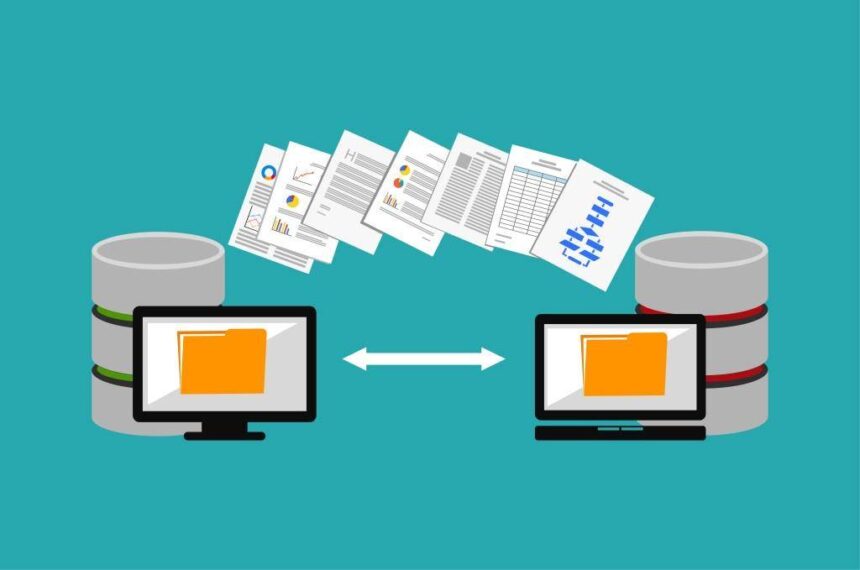We previously wrote about the importance of standardizing data migration. Unfortunately, many businesses are still at a loss over the data migration processes that they should be following, so we decided to talk in more detail about the benefits and practices.
If you are into business, there is no need to mention how data migration is essential for your business. It is not only your business, but almost every company has eventually undergone the data migration process. And there is not a single reason but many.
Many people believe that the data migration process is simple. However, companies pay $12.8 billion a year to have the process carried out properly. This illustrates how complex it is, which means that it is important to get it down right.
Understanding the Process of Migrating Data
When you transfer data from one system to another, it is called data migration. Data migration involves radically changing the storage process, database or application. The process can involve transferring between servers. It may also entail the transfer of data between operating systems or databases. You can also migrate data from a standard server to the cloud.
Regardless of what data migration process you actuate, you need to follow three necessary steps. They can be summarized as Extract, Transform, and Load (ETL). The final steps–Transform and Load–must be conducted during every migration process.
You can now easily figure out that the data you extract has to go through many procedures for preparation. After these processes are completed, they can be transferred to the final location.
There can be many reasons for you to migrate data, such as overhauling the entire system, upgrading the current database, merge the data with the new source, or expanding the existing one.
You can extract and migrate any type of data. If you are handling data for a collaboration tool like Microsoft Teams, then you can try using a microsoft teams migration tool to make the process easier.
Make sure that you adhere to the best possible migration strategy, regardless of why it is a must for successful data migration.
Why Should You Migrate Data?
Data migration increases the performance and competitiveness of your system. But, bear in mind that it is not a smooth and straightforward affair. It is rather a risky and expensive affair. And it is needless to say that if you fail to do it in the right ways, you will incur money outgo and time consumption. If you do not plan it right, you will likely see problems creeping up instead of solutions to problems. As a result, you are likely to see redundancies, with the migration process failing. As such, you need to carefully implement your migration strategy at any cost.
How to Implement a Successful Data Migration?
To actuate a successful data migration, it will help if you follow the following steps:
Know the Data
Conduct a complete data audit to understand its context in its entirety. It will also help you to minimize migration issues. Again, do not fall behind in cleaning up the data thoroughly to eliminate any extraneous data that might be overloading the server. Cleaning will make your data a lot easier to manage.
Security and Conservation
During data transfer, ensure that you pass the data through controls meant to improve reliability, as data tend to degenerate with time.
Quality Check
Monitor the data to understand data integrity better.
Right Migration Tools
To accomplish a successful data migration, you need to implement the right software tools to ensure migration is completed successfully.
Data Migration Strategies
Appropriate strategies are crucial to accomplish a migration successfully. You can classify data migration strategies into a couple of very large categories:
The ‘Big Bang’ Migration
The ‘Big Bang’ Migration is generally seen as the fastest data migration strategy. However, it has some positives and negatives. In this strategy, the entire data gets migrated in a very short timeframe. Although you get the advantage of transferring your whole data in a one-go, you are also likely to encounter issues after the migration has been completed.
The ‘Tickle’ Migration
It is a time-consuming strategy but a popular one. This strategy involves migrating data in phases with the systems on either side of the server running in parallel with each other. However, the process downtime is generally much lower, due to the continuous migration in phases.
Best Migration Practices
Another imperative for attaining a successful data migration is the implementation of the best migration practices, which are:
Data Backup
Get data back up before migrating your data. If, during migration, there is any data loss or gets corrupted, you can have the original data.
Implement the Strategy
You should stick to the data migration strategy you are implementing, even if it is time-consuming or frustrating.
Test Continuously
You need to conduct tests throughout the planning, designing, execution, and maintenance phases to get a successful migration, free of any error.
Identify the Scope of Development
Data migration is transferring content from the source to the host system and improving upon the existing data. As such, you should make efforts to improve the content, wherever necessary.
Communication and Cooperation
When you migrate data, it is not only your IT team that gets involved. It impacts your entire business. Therefore, you should involve all your teams one way or the other before and during the migration process.
Data Migration Software
You have the freedom to use two kinds of software to migrate your data. One, your IT team can code on their own, and two, you can buy a data migration tool from the market. But, coding such a tool from scratch is challenging and time-consuming, so it is better to purchase an efficient tool.
If you prefer purchasing a data migration tool, then look for the following features that dictate its efficiency:
Connectivity
Ensure that the solution supports the systems and software you use.
Scalability
Check out the data limits for the software and determine whether your data needs can exceed the future.
Security
Examine the security features of the software as you need to protect your data.
Speed
Check out the speed of the tool to figure out how quickly the data can be transferred.
Conclusion
You should not undermine the importance of data migration, as it is essential for your business’s growth and development. You need to adhere to a strategic process, or else you will encounter problems rather than solutions. You should handle the entire cycle of migration carefully and cautiously so that it turns out to be an asset for your business.
You should make sure that there is proper planning and the best strategy to elicit a risk-free and cost-effective migration.









